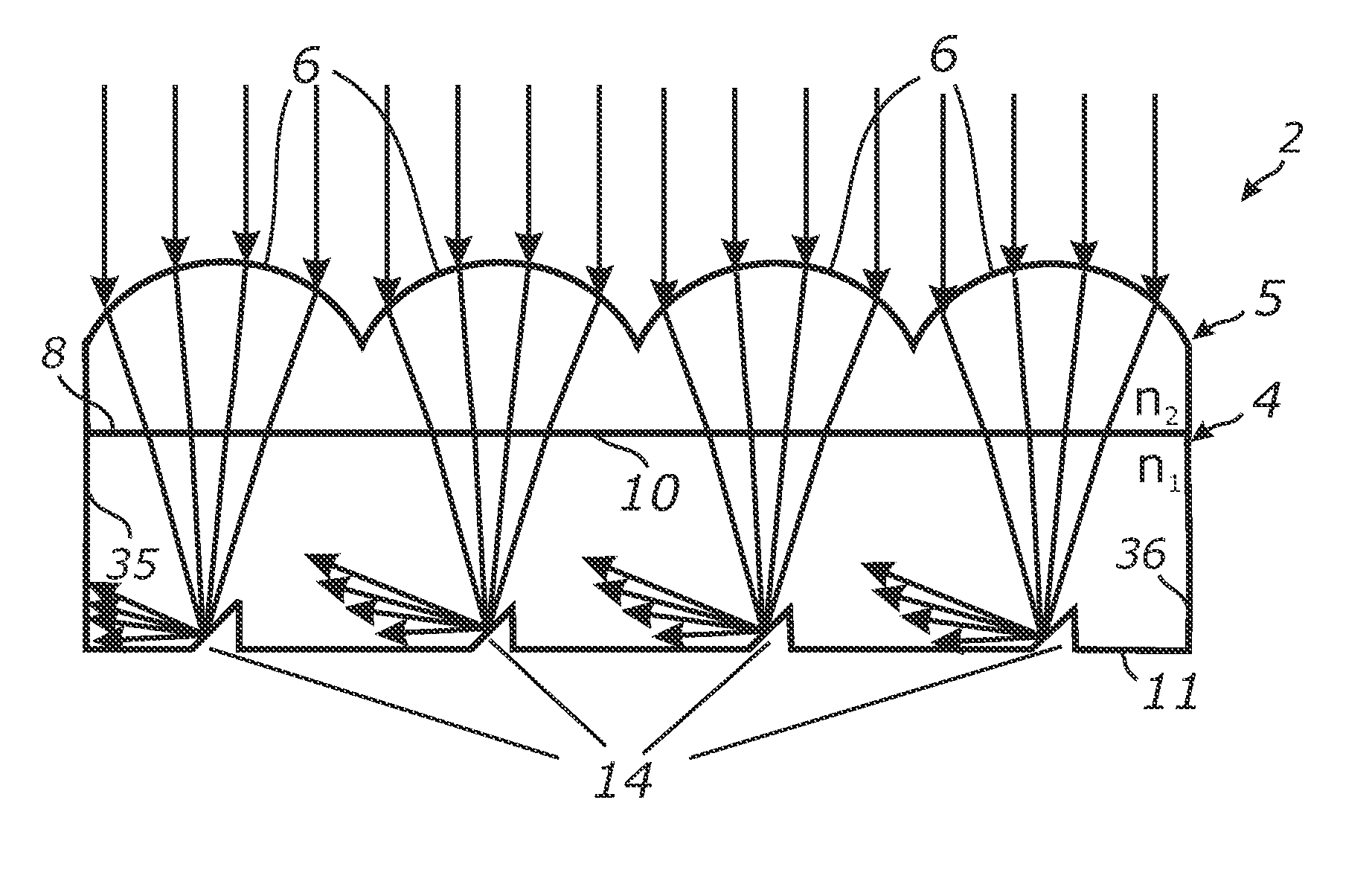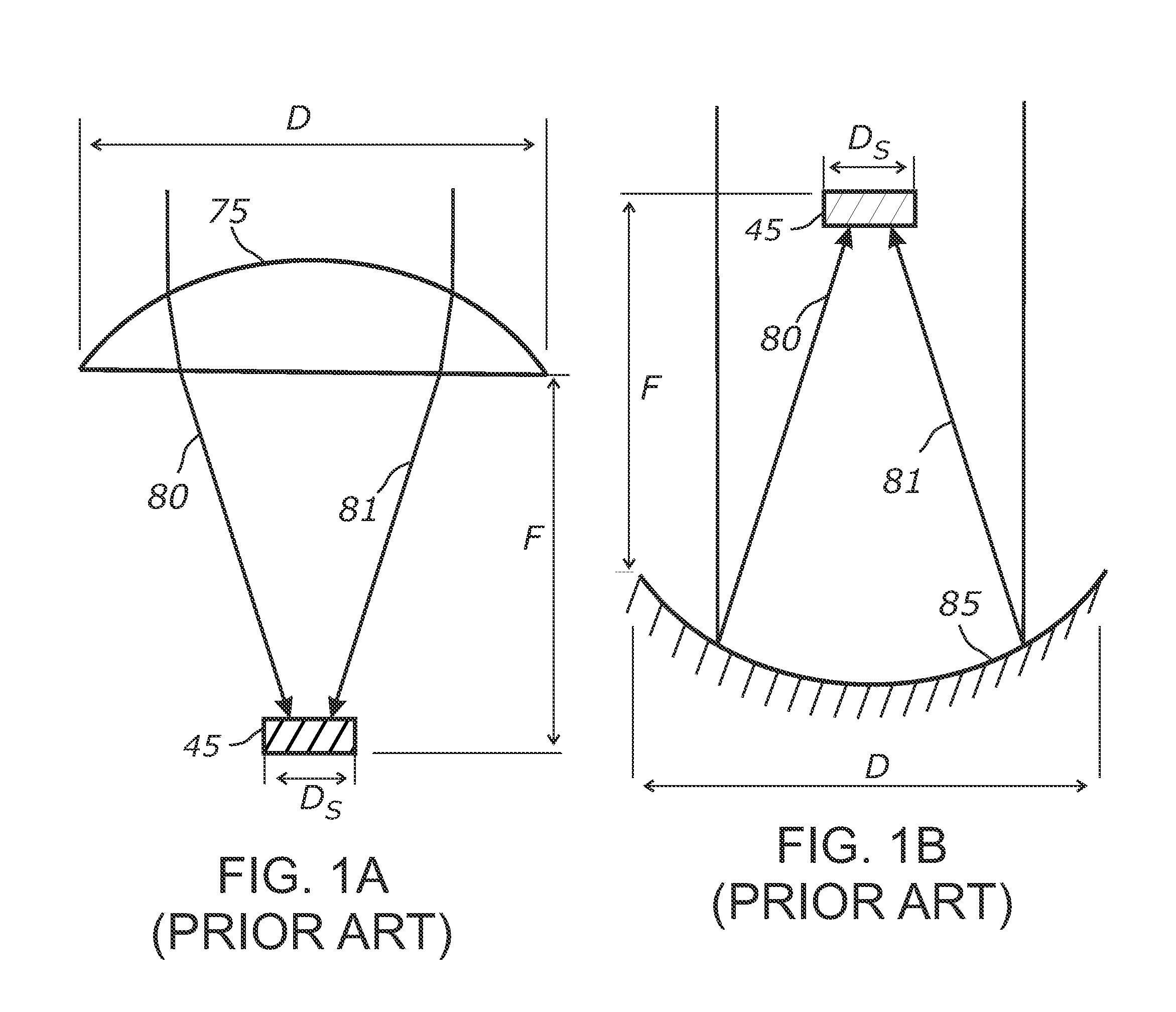Light collection and illumination systems employing planar waveguide
a planar waveguide and light collection technology, applied in the field of optical reflection devices, can solve the problems of affecting the utility of devices, requiring a fairly complex structure, and occupying substantial volume, and achieve the effect of facilitating light transport and harvesting
- Summary
- Abstract
- Description
- Claims
- Application Information
AI Technical Summary
Benefits of technology
Problems solved by technology
Method used
Image
Examples
embodiment 2
[0130]A suitable optical interface 8 can be created by various mechanisms. For example, when the total internal reflection is used for trapping the light in waveguide 4, interface 8 may comprise a physical boundary or wall of the body of waveguide 4 which is surrounded by outside media with lower refractive medium such as air. Alternatively, it can be an interface between two media having different refractive indices so that the refractive index increases along the optical path from focusing means 6 toward waveguide 4. Interface 8 can be implemented by separating waveguide 4 from the body of collector array 5 or from bodies of individual focusing means 6 by means of a thin layer of air, a layer of lower refractive index dielectric medium or any other boundary between a higher refractive index medium and a lower refractive index medium. In a more specific example, interface 8 can be implemented from an interface between glass, PMMA or polycarbonate (high refractive index) and a low r...
embodiment 1
[0287]2. The apparatus of embodiment 1, wherein said plurality of light collimating elements comprises a parallel array of elongated lenticular lenses.
[0288]3. The apparatus of embodiment 1, wherein said plurality of light collimating elements comprises a parallel array of elongated focus mirrors.
[0289]4. The apparatus of embodiment 1, wherein said plurality of light deflecting elements comprises a parallel array of elongated grooves.
[0290]5. The apparatus of embodiment 1, wherein said plurality of light deflecting elements comprises a parallel array of elongated grooves; wherein said grooves are configured at a slope angle which is bounded by the relation in which is the refractive index of the planar waveguide and is the refractive index of the collimator array.
[0291]6. The apparatus of embodiment 1, wherein said plurality of light deflecting elements comprises grooves within said planar waveguide configured for redirecting the received light in response to reflection from at leas...
embodiment 32
[0318]33. The apparatus of embodiment 32, wherein said plurality of light collecting elements comprises a parallel array of elongated focus mirrors.
[0319]34. The apparatus of embodiment 32, wherein said plurality of light collecting elements comprises a parallel array of elongated lenticular lenses.
[0320]35. The apparatus of embodiment 32: wherein said plurality of light deflecting elements comprises a parallel array of elongated grooves.
[0321]36. The apparatus of embodiment 32: wherein said plurality of light deflecting elements comprises a parallel array of elongated grooves; wherein said grooves are configured at a slope angle θ30 which is bounded by the relation
arcsin(n2n1)≤θ30≤arccos(n2n1)
in which n1 is the refractive index of the planar waveguide and n2 is the refractive index of the collimator array.
[0322]37. The apparatus of embodiment 32, wherein said plurality of light deflecting elements comprises grooves within said planar waveguide configured for redirecting the receive...
PUM
 Login to View More
Login to View More Abstract
Description
Claims
Application Information
 Login to View More
Login to View More - R&D
- Intellectual Property
- Life Sciences
- Materials
- Tech Scout
- Unparalleled Data Quality
- Higher Quality Content
- 60% Fewer Hallucinations
Browse by: Latest US Patents, China's latest patents, Technical Efficacy Thesaurus, Application Domain, Technology Topic, Popular Technical Reports.
© 2025 PatSnap. All rights reserved.Legal|Privacy policy|Modern Slavery Act Transparency Statement|Sitemap|About US| Contact US: help@patsnap.com



